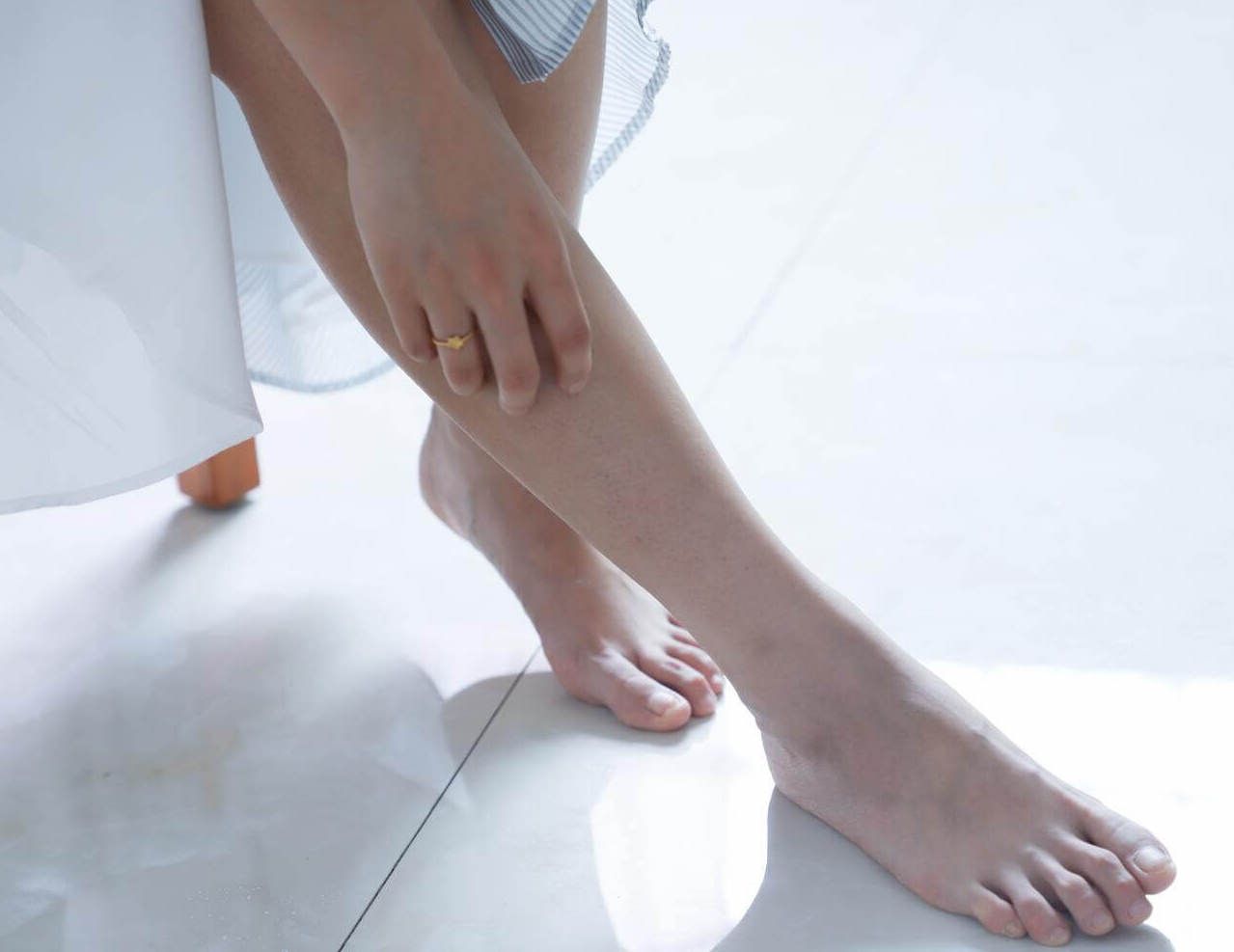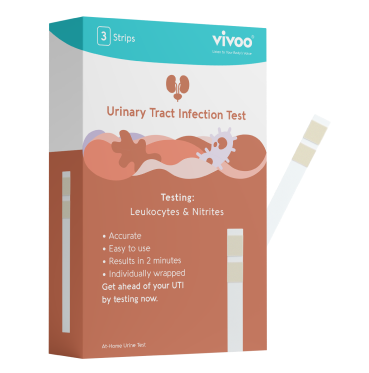A yeast infection, also known as candidiasis, is a common condition caused by an overgrowth of the fungus Candida albicans in the body. The symptoms of a yeast infection can vary from itching, burning, and discharge in the vaginal area, as well as pain or discomfort during sex or urination. Around 75% of women worldwide experience at least one yeast infection over their lifetimes.
While vaginal yeast infections are not a sexually transmitted infection, there is an increased risk of contracting it around the same time that one begins to engage in regular sexual activity. Infections can also be linked to mouth-to-genital sex, according to some studies. Activities that improve your sexual health will help reduce the risk of a yeast infection.
This blog will provide instructions for performing a home test for a yeast infection, as well as tips for preventing and managing it if you have one.
What Is The Typical Vaginal Ph Level?
Typically, the vaginal pH level falls somewhere between 3.8 and 4.5. This slightly acidic environment helps keep things balanced and supports the natural defenses against unwanted bacteria or yeast. It's all part of the body's natural way to maintain a healthy balance!
What Causes Unbalanced Vaginal Ph?
Maintaining a balanced vaginal pH is key to vaginal health. Understanding what can cause imbalances can help in preventing discomfort and infections. An unbalanced vaginal pH can be caused by a few different factors that throw off the natural balance down there.
When the balance is disrupted, it can lead to discomfort and even infections. Several factors can contribute to an unbalanced vaginal pH, including:
- Antibiotics: These are supposed to help us fight infections, but sometimes they wipe out the good bacteria along with the bad, messing with the natural balance.
- Douching: Even though it might seem like a good way to clean up, douching can actually wash away the good bacteria and mess up the pH balance.
- Harsh Soaps and Body Washes: Some soaps and washes can be too harsh for the sensitive vaginal area, leading to irritation and pH imbalance.
- Hormonal Changes: Fluctuations in hormone levels, particularly estrogen, can affect vaginal pH. This is commonly seen during menstruation, menopause, or pregnancy.
- Unprotected Sex: Semen is more alkaline, with a pH of around 7.2 to 8. If not protected, sexual intercourse can raise the vaginal pH temporarily.
- Tight Clothing and Synthetic Fabrics: Wearing tight, non-breathable clothing can create a warm, moist environment that can upset your pH balance.
Keeping things in balance down there is key to avoiding discomfort and infections. It’s all about knowing what affects your body and how to maintain a healthy environment.
If you're experiencing symptoms like unusual discharge, odor, itching, or irritation, it might be a sign of an unbalanced vaginal pH. In such cases, it's a good idea to consult with a healthcare provider who can offer guidance tailored to your specific needs. You can also use Vivoo's Vaginal pH test. With this home test, you can track your vaginal pH imbalances and know when to consult a doctor.
Remember, you're not alone in this—many women experience similar issues, and there are steps you can take to regain and maintain a healthy vaginal environment.
What Is A Good Ph Level For A Vagina?
Maintaining the natural balance of your vaginal health is crucial, and understanding pH levels plays a significant role in this. The ideal pH level for a vagina typically ranges from 3.8 to 4.5. If the pH level rises above 4.5, it could make the environment more susceptible to infections such as bacterial vaginosis or yeast infections.
What Ph Level Is A Yeast Infection?
A yeast infection typically occurs when the pH balance of the vagina shifts towards a more alkaline environment. Normally, the vaginal pH is quite acidic but when it rises above, conditions become more favorable for the growth of Candida, the fungus responsible for yeast infections.
This shift can make the pH lean towards a level of about 4.5 to 7.5, which can lead to discomfort and the symptoms associated with a yeast infection. It’s this change in the pH balance that plays a key role in the development of the infection.
You can track your vaginal pH levels easily with the Vivoo Vaginal pH test. Vivoo's Vaginal pH provides women with the tools to understand and manage their vaginal health. By accurately tracking pH levels, users can identify potential imbalances early and take proactive steps to restore and maintain optimal vaginal wellness.
How To Test Vaginal Ph At Home?
One of the ways of testing whether you have a vaginal yeast infection is to take an at-home vaginal pH test. These tests measure your pH on a scale from 1-14, and is a way to determine the acidity of your vaginal discharge. If your vaginal discharge is more acidic, then it means that it has a lower pH value.
The vagina is relatively acidic, and it is normal for its pH to range between 4.0-4.5 during one’s reproductive years. Normal vaginal pH is typically associated with vaginal yeast infections, but high vaginal pH is typically caused by trichomoniasis and bacterial vaginosis. By performing a pH test at home, you can take precautions against the non-yeast causes of vaginitis.
Finding out the pH of your vaginal discharge can help you determine the possible underlying issues that might be causing vaginal problems.

What Do The Results Mean?
Your doctor may prescribe you some medication or suggest that you take over-the-counter antifungal medication if your tests reveal that you have a yeast infection. Antifungal medications are available for various infections and come in many forms, such as pills, creams, suppositories for the vaginal area, lotions, pellets, and moisturizers for the skin. Your doctor will determine which treatment option is the best for you.
Even if you start feeling better before you finish using your medication for the prescribed period of time, taking it all as directed is crucial. Many yeast infections improve within a few days or weeks of treatment, while some fungal infections may require several months or more of care before they entirely disappear.
How To Choose An At-Home Test For Yeast Infection?
The best at-home yeast infection test for you will depend on any indications or other medical conditions you may have.
Some things you might consider before choosing the type of home test might include:
- How quickly you want your results
- The accuracy of the test
- The cost of the test
- The type of packaging used for advertising the test
For a more precise diagnosis, you might need to consult a doctor following several rounds ot tests. You should schedule a visit with a medical practitioner if your test results reveal that your pH levels are abnormal or that you have a vaginal infection of some kind.

Tips For Self-Care
Although there isn't anything you can do to completely prevent yeast infections, there are a few things you can do from home to help treat them if you get it.
Acidophilus
Yogurt with the live cultures of the "friendly" bacteria lactobacillus acidophilus can help you prevent getting a yeast infection. If you’re not big on yogurt, you can also try using lactobacillus acidophilus pills, which may help you avoid them.
Wear breathable clothes
Wear cotton pants and/or underwear instead of tight-fitting ones so that your body can "breathe" and be more exposed to the air. Also, yeast thrives in warm and damp settings, so it’s important to keep your vaginal area dry and airy to avoid your yaest infection from recurring.
Non-prescription medications
You might try an over-the-counter medicine to treat your symptoms if you are certain that you have a yeast infection. These products typically come in the form of lotions, liquefiable tablets, or oval-shaped suppositories that are inserted into the vagina. Nevertheless, it’s important to reach out to your doctor if your symptoms don't go away.
When To See Your Doctor
You may need to go see a doctor about your yeast infection if any of the following three scenarios apply to you:
If you've never had a yeast infection in the past
Consult a physician to ensure that it is not a more serious issue that requires a different course of therapy, such as another sexually transmitted infection (STI) or urinary tract infection.
If you’re pregnant
Any drug, including over-the-counter vaginal creams, must be cleared with your doctor if you are pregnant.
If you get yeast infections frequently
Recurrent vulvovaginal candidiasis is when a patient experiences four or more yeast infections in the space of a year. If you have it, then you will be prescribed an antifungal for up to 6 months. Additionally, persistent yeast infections may indicate diabetes or another medical issue.
You should visit your doctor for your personal peace of mind if you have concerns about your symptoms or if they differ from other yeast infections you have previously experienced. For example, your doctor might suggest a vaginal lotion with ingredients that are as strong as other prescription drugs to relieve the burning and itching more quickly than another over-the-counter remedy. Oral antifungal medicines are another option that doctors might prescribe you to treat your yeast infection.
In any of these situations, it’s important that you consult your doctor before beginning any treatment for a suspected yeast infection because at-home testing for yeast infections cannot substitute a diagnosis from a doctor. It's also necessary to carefully read the directions accompanying your test kit.

















